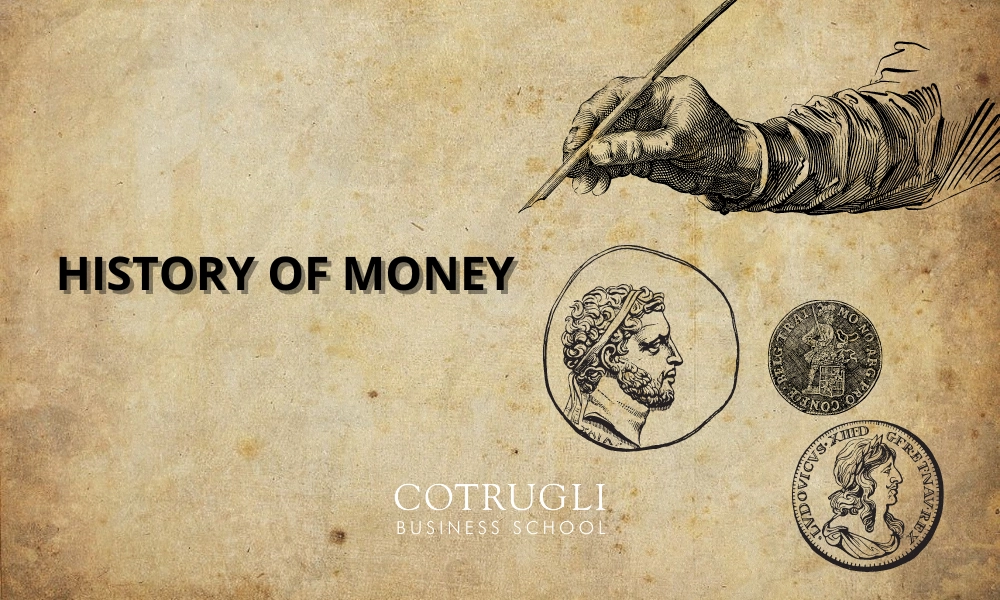History of Money
From cattle to paper money and everything in between
Money can be defined as any permanent commodity generally accepted as a medium of exchange and measure of value. Throughout history when most of the population was illiterate money was often used for political, social, religious and advertising purposes.
Commodity as money
Commodities important for human existence such as animals, foods and clothes were the first object used as money starting around 6000 BC, and their use in some parts of the world survived up to the 20th century. Cattle, salt, rice, cacao beans, tea, beer, silk and cotton were the most common goods used as money. Testimony to the importance that they had in history remained preserved in today’s language. The modern monetary unit of India, the “rupee” has its origin in the Sanskrit word for cattle, “rupa”. The usage of the word “bucks” for money derived from the practice of early Americans who traded animal skins, including deer and elk bucks.
Symbolic currencies
As time passed, people began to use as proto-money the objects whose value was of more aesthetic and symbolic nature. Although at various times and places in history a wide array of commodities served as money several are particularly interesting. Feathers were used as money on some islands in the Pacific Ocean, the ornamental metal jewelry called “manillas” was used in Western Africa, while cowrie shells were widely used as currency in China, India, Thailand and West Africa. However, the stone money (“rai”) of the Yap islands in the Pacific Ocean and “tambua” or whale teeth of Fiji represents a rather unusual currency.
Metal ingots
In search of a commodity that would be more permanent and better suited for business affairs, the people began to use metals in the form of metal ingots of different shapes and sizes. However, the metal ingots were not an ideal solution for business transactions as the main criterion of their worth was actually their weight. Before accepting an ingot as payment, the merchant needed to carry out a careful examination of its weight, and more important, of its quality.
Coins
The first coins in history occurred almost simultaneously in two very remote parts of the world – in ancient Greece around 650 BC and in ancient China around 500 BC. Gold, silver, and bronze were three metals from which money was made throughout history.
Paper money
Tendencies to further simplify the business eventually led to the invention of paper money. The first paper money was invented in China in the 10th century but it took centuries before it was introduced in Europe in the 17th century. The honor of being the first issuer of paper money in Europe belongs to the Stockholms Banco, the precursor of the Swedish central bank.
Minting
Until the 17th century when the screw press became standardly used the European coins were produced manually in mints. The Industrial Revolution brought a plethora of various minting machinery, first powered by steam and later with electricity. In contrast, the Chinese and other Far Eastern countries didn’t mint their coins but poured molten metal into molds.
Forgery
The history of counterfeiting is as old as the history of money. One of the earliest methods of forgery was plating, casting and “multiplying the coin”. The best ways to detect forged coins were weighing, inspecting of thickness and diameter of the coin, and cutting the coin to inspect its material.







